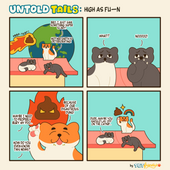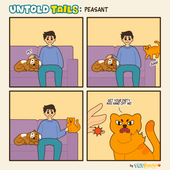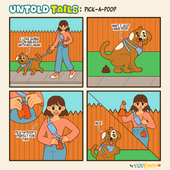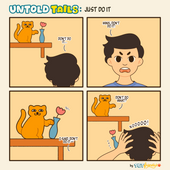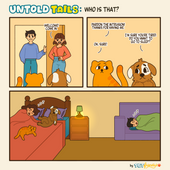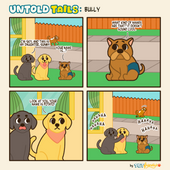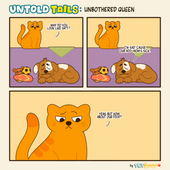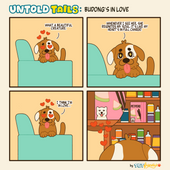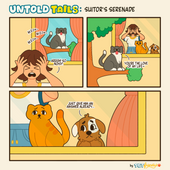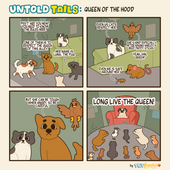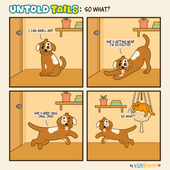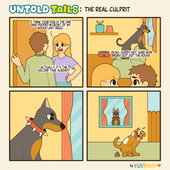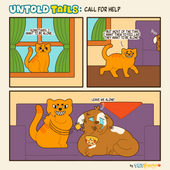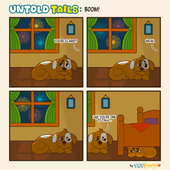Plastics are deeply woven into the fabric of our daily lives, seamlessly integrated in nearly every facet of modern society. From the packaging that holds our food to the medical equipment that saves lives, plastics were designed to make life easier, offering unmatched convenience and safety. But beneath their many benefits lies a hidden danger. Plastics, when misused or improperly disposed of, become a silent threat. They linger in our environment for centuries, accumulating in our oceans and landfills, causing irreparable harm to wildlife and ecosystems. Experts warn that one day, there could be more microplastics in our oceans than stars in the sky (United Nations Environment Programme, 2016). Our children may never experience the same biodiversity we once took for granted, and future generations will bear the consequences of our choices (United Nations Environment Programme, 2020). The truth is clear: if we don't act now, the cost of our convenience will be paid in ways we can’t afford to ignore.
As pet owners, we interact with plastic bags on a daily basis, in the form of poop bags. It’s a daily responsibility we all share: cleaning up after our pets. But why is this important and what are the implications on the environment? First, despite common belief, pet waste is not a magical fertilizer. In fact, it has high nitrogen content and decomposes slower than it compiles- harming landscaping and detracts from the beauty of our community spaces (United States Environmental Protection Agency, 2020). Second, leaving pet waste behind can spread parasites and infectious diseases, posing health risks not only to other pets but to humans, especially children who play in parks (Centers for Disease Control and Prevention, 2021). Third, failing to clean up after our pets can create division and resentment towards them, when the true responsibility lies with the pet parent, not the pet. Unfortunately, this negligence often results in stricter regulations or even complete bans on pet-friendly spaces, unfairly punishing responsible pet parents for the mistakes of the few (Humane Society of the United States, n.d.). A single act of negligence can spark frustration, leading to negative perceptions and unjust treatment of well-intentioned pet parents who are simply trying to enjoy public spaces with their furry companions.
Let this Earth month serve as a reminder that we all need to be more conscious of our waste and be respectful of community spaces. This brings us to reflect on poop bags.
Do you know its community benefits? Do you know what it’s made out of? Do you know where it ends up after tossing it in the trash bin?
Our goal, to begin with, was simple yet urgent: to tackle the growing issue of unkept and unhygienic community spaces in the Philippines. As pet parents ourselves, every day, we encounter unpicked poop on a daily basis. We wondered if it was an issue to others too. Unsurprisingly, we saw many complaints flooding local Facebook groups, with frustrated citizens sharing their concerns about pet waste littering parks, streets and even indoor pet-friendly establishments. It was clear that the problem was escalating. We knew we had to act. Our vision was not only to foster a culture of responsible pet ownership but we also want to advocate for the health of our communities and our planet.
As we delved deeper into the issue, we uncovered a much harsher reality than we expected: the supposed “solutions” we were relying on weren’t solutions at all. Plastics are plastics, and many poop bag companies aren't transparent about how ineffective their products truly are.
We discovered that biodegradable, compostable and “plant-based” poop bags- often hailed as eco-friendly alternatives, don’t actually break down in the Philippines’ flawed waste management systems (Alave, 2013). In fact, many of these bags still contain PBAT, a substance that is essentially plastic in disguise. Without PBAT, the bags lack structure and strength- very flimsy, and tears easily, making it impossible to contain pet waste. The situation worsened when we learned about flushable poop bags, which seemed like a more convenient choice but are actually far worse. These bags don’t just fail to degrade; they clog our sewage systems, contributing to catastrophic flooding and worsening the already pervasive issue of microplastics in our oceans.
Faced with this harsh truth, we knew we couldn’t keep encouraging our community to purchase the flawed options mentioned above. With that, we came up with Pick-A-Poop Bags, made from certified 80% post-consumer recycled materials. This eco-conscious choice lowers our carbon footprint compared to the so-called “eco-friendly” alternatives flooding the market that aren’t even fit for our local systems.
However, we recognize that this is only part of the solution. Tackling the broader issue of plastic pollution requires more than just switching to better bags- it requires a commitment to reducing waste whenever we can, reusing materials, and giving new life to what would otherwise end up in landfills. Pick-A-Poop Bags are just one step closer in our ongoing journey toward a cleaner and … orange future. By making mindful choices today, we can help preserve the beauty and health of our communities and our environment for generations to come.
Be a supaw-hero and keep our community spaces clean and … orange! Pick-A-Poop, don’t leave that poop 🚮🧡
How to Use Pick-A-Poop Bags?
PICK IT: Place your hand inside the bag and use it to pick up the poop (can also contain, cat litter or used diapers)
BAG IT: Turn the bag inside out and tie it securely in a knot.
TRASH IT: Dispose of the bag in a trash bin for proper disposal.
Why Choose Pick-A-Poop Bags?
- Sustainable: Made from 80% post-consumer recycled materials, these bags help reduce plastic waste by repurposing single-use plastics.
- Durable: Leak-proof and tear-resistant, each bag guarantees reliable performance.
- Scented: Infused with a fresh scent to mask even the worst odor from your pet’s waste.
- Multifunctional: Ideal not only for dog waste, but also for cat litter and diapers, making them a versatile household solution.
Sources:
United Nations Environment Programme (UNEP). (2016). "Marine plastic debris and microplastics." UNEP Report.
United Nations Environment Programme (UNEP). (2020). "Global Environmental Outlook – GEO-6: Healthy Planet, Healthy People." UNEP Report
United States Environmental Protection Agency (EPA). (2020). "Pet Waste and Pollution.”
Centers for Disease Control and Prevention (CDC). (2021). "Dog Waste and Disease."
Humane Society of the United States (HSUS). (n.d.). "Pet Waste: Community Impact."
Alave, Kristine L. (2013) "Biodegradable Plastic Not Really a Good Alternative." Philippine Daily Inquirer
Oceana Philippines. (2022) "Microplastics in the Environment, Health Risk: More Reasons to Ban Single-Use Plastics—Oceana."



